Wondering how to keep vinyl from peeling off shirts?
Maybe you thought that it adhered properly, but after a few washes, you noticed the heat transfer vinyl peeling off.
Or maybe you could tell that your HTV design was barely sticking after the press, so you weren't all that surprised to notice the heat transfer vinyl peeling off the shirt – but you really wish you understood what went wrong!?
Today we share the 10 most common reasons why your HTV material did not adhere properly to your fabric so that you can learn how to prevent vinyl from peeling off shirts.
How to Keep Vinyl from Peeling Off Shirts
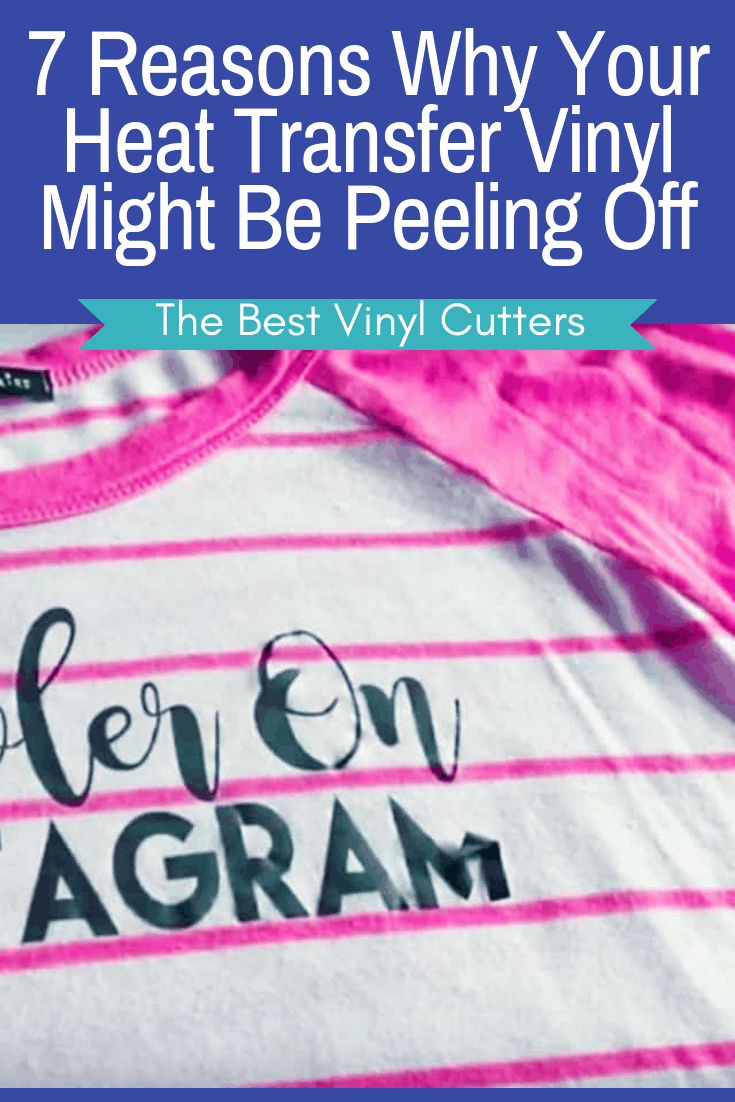
First of all, it is essential to know that it is pretty normal to have a heat press project go wrong (especially if you are still a beginner). It happens to everybody, and these mistakes allow us to learn and improve.
So if you can't figure out why your heat transfer vinyl decal won't stick, we are here to help you learn more about the most common issues when it comes to applying your vinyl.
And while you are at it, make sure to read our post on how to ensure that your iron-on vinyl will last for longer.
Here are our best tips on how to keep HTV from peeling:
1. Not Enough Pressure
Firm pressure is key when working with vinyl. It's best to use a heat press if you can, as it will ensure the correct amount of pressure is applied, and that the vinyl adheres properly.
The downside to a manual hand-held heat press or iron is that it can be tricky to figure out how much pressure to apply; too little and your vinyl won't adhere properly.
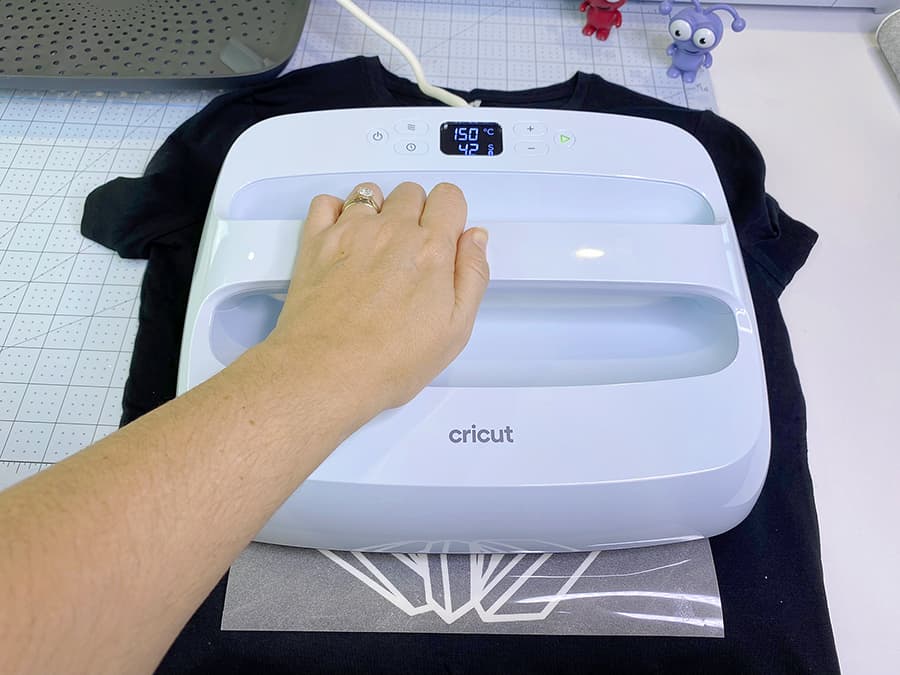
Have a close look at your vinyl after pressing, can you see the fibers of the shirt binding with the vinyl? If not, give it another press.
If you're using an iron or Cricut EasyPress, I recommend applying some heat from the backside of your garment too – this helps ensure that the glue is properly melted in order for a good bond between fabric and vinyl.
Read up on how an EasyPress compares to a heat press here.
Another tip here is to make sure you use a pressing mat, rather than an ironing board or folded towel.
2. Use High-Quality HTV
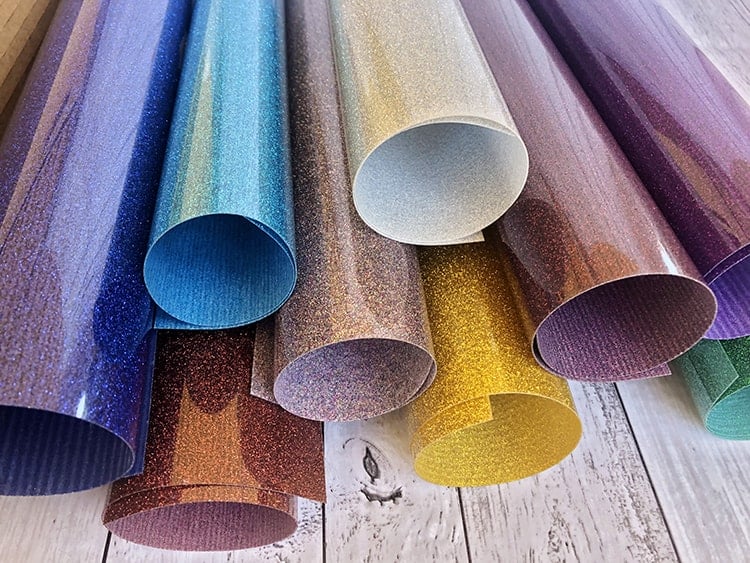
When you are shopping for heat transfer vinyl (HTV), it is important to consider the quality of the vinyl you are using. Not all HTV is created equal, and it is better to invest in high-quality, reputable brands like Siser.
Buying from Amazon can be a great option but make sure to read all the reviews carefully before making a purchase. Additionally, avoid buying any old stock HTV that may have been sitting on shelves for some time.
Even though it may seem like you are saving money in the short term, investing in quality will give you much better results in the end.
3. Is The Size of Your Heat Press Larger Than Your Design?
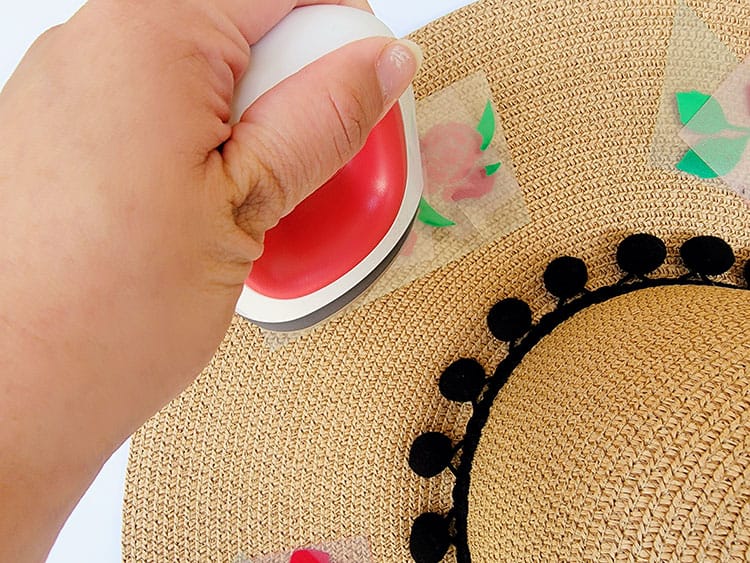
If your heat press plate is smaller than your design, it could be causing issues, especially if you are using a handheld press like the EasyPress or household iron.
In that case, pressing the shirt multiple times to cover the whole design may result in some areas not getting the required amount of heat.
4. Make Sure The Vinyl Will Work on That Type of Material
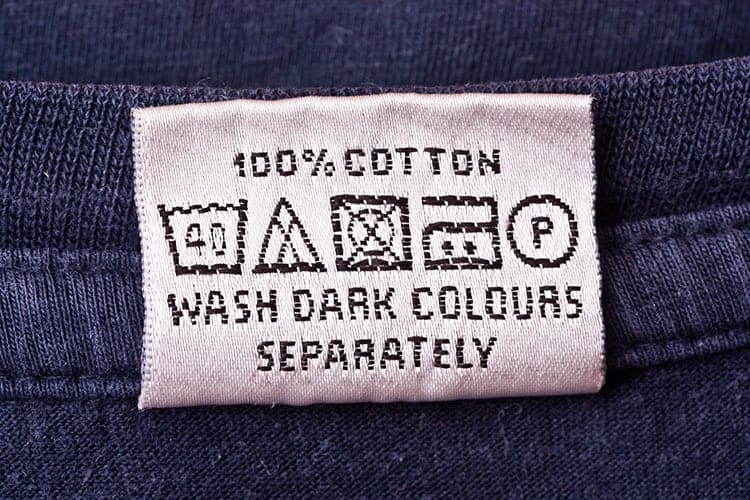
Did you know that it is important to match your type of vinyl to the correct type of fabric?
So first of all, check the tag on your shirt to see what the shirt is made of.
Next, use our list below to see if you used the correct type of vinyl for your shirt.
Tip: You might like to do a tester on the shirt before you get into it because not all garments are created equal.
- Most Common Types: For shirts made from cotton, poly, cotton/poly blends, and more, the safest choice is Siser Easyweed. Siser Easyweed is popular, and it is a great quality vinyl. Click here to grab some Siser Easyweed vinyl.
- Nylon Fabrics: Most crafters love working with Nylon shirts, which means that you need to purchase heat-transfer vinyl for Nylon, and not all HTV will work well with Nylon. Look at Siser P.S. Film Extra – EasyWeed Extra or Siser Extrareflex.
- Spandex: If you are working with Spandex, you should work with vinyl that loves sticking to Spandex. Try Siser P.S. Stretch – EasyWeed Stretch.
You might also like to hop over to our guide on the best heat transfer vinyl for shirts. The brands listed on that post have all been tested and work brilliantly on T-shirt fabric.
You can also find our list of the best shirts for HTV here.
5. Make Sure to Follow the Instructions
All vinyl comes with instructions (sometimes, you need to do a quick Google search to find them). Follow them for the best results. It is crucial to get the time, temperature, and pressure settings right, if you do not want your HTV to peel off soon.
This is why we prefer to use a heat press machine instead of an iron because then you can set and control each of these settings. With an iron it can be tricky to apply the correct temperature and the correct pressure.
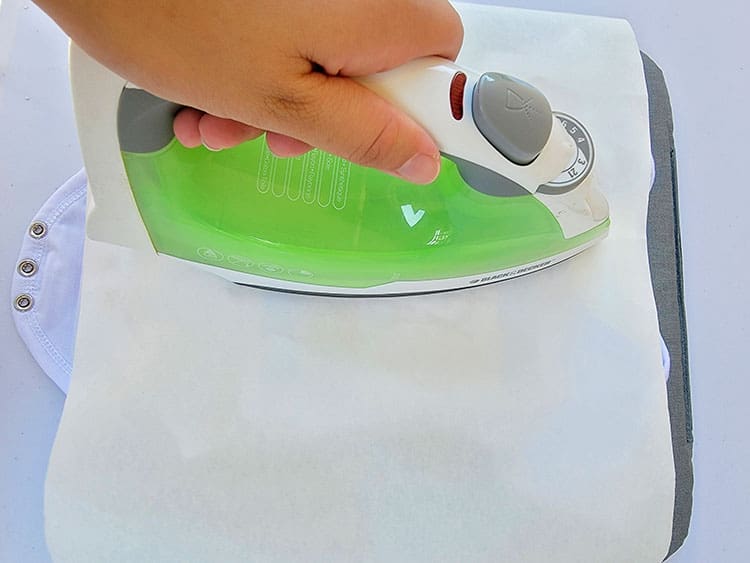
If in doubt I suggest you increase the time a bit and increase your temp slightly.
6. Don't Adhere Vinyl to Zips, Buttons, Collars, and Thick Seams
Have a good think about your vinyl transfer placement. Areas that are raised can cause more headaches than what it is worth!
You will lose a lot of pressure over areas that are raised, which will result in some vinyl adhering properly whilst other sections might still be a bit loose.
Fortunately, you can use heat transfer pillows if you are really set on the idea of adhering your design over raised areas.
But if you are a beginner, we highly recommend that you keep things simple and just try to avoid these areas for now.
Click here if you want to grab a heat transfer pillow.
7. Does the Fabric Have a Coating?
Another common problem can sometimes be that the fabric has a coating on it. Some shirts have a waterproof coating, whilst others might have a fire-retardant coating.
Vinyl sticks to the fibers of the fabrics, so if there is a coating on top, it will stop the vinyl transfers from adhering correctly. So best to grab some blank apparel that doesn't have a coating to keep life nice and easy.
8. Check Your Heat Press
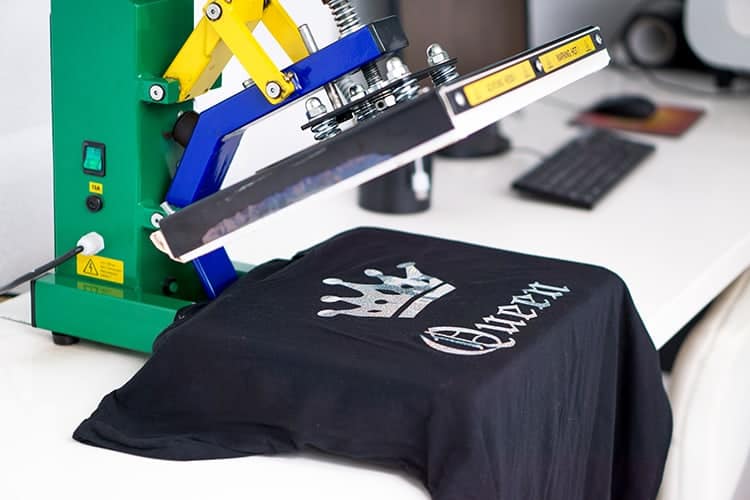
Does your heat press distribute heat evenly? Some heat press machines tend to have hot and cold spots – which will obviously cause problems with how well your vinyl will adhere.
Sometimes the heating elements in a heat press will stop working properly. So it might be time for a new machine. Why not check out our handy guide to help you find the best heat press machine for vinyl.
9. Hot Peeling vs Cold Peeling
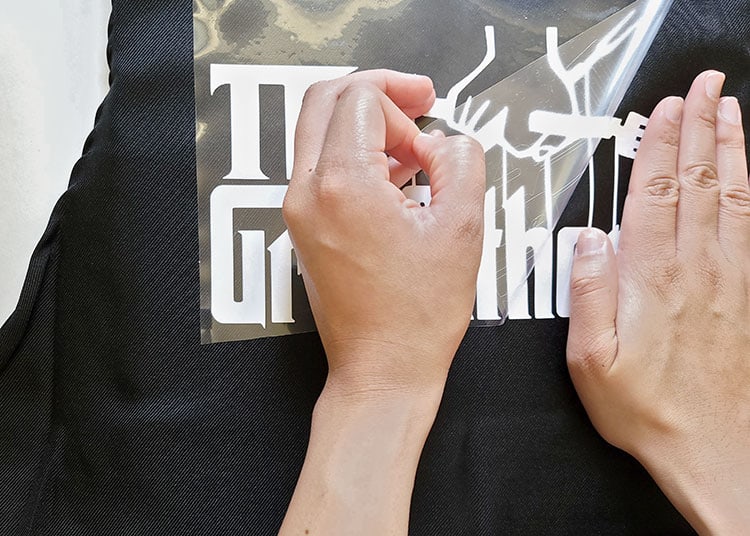
Are you peeling off the vinyl backing whilst your vinyl design is hot, or do you wait for it to cool down? Which is the right way? Well as always, it is best to check your vinyl's instructions.
Some types of heat transfer vinyl require their backing to be peeled off straight away (so whilst it is still hot), whilst other types of vinyl require you to cool it down completely before you remove the plastic carrier.
Check the instructions on the packet (or on Google) to see if your type of HTV is a warm peel or cold peel vinyl.
10. Did you Use Fabric Softener?
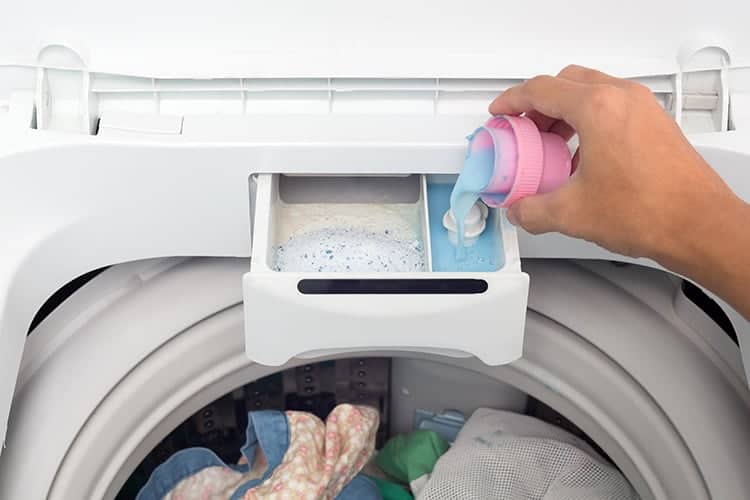
Some crafters love to pre-wash their apparel. And sometimes, without even thinking you might add fabric softener, just like you would when washing your everyday clothes.
The trouble is that the softener creates a bit of a coating in between your fibers, and this causes problems when your vinyl tries to stick to those same fibers.
It is however a good idea to prewash your fabric items in a washing machine before you start working with them.
Your Vinyl Will Eventually Peel Off!
Now, keep in mind that your vinyl will eventually peel off. How soon will depend on the brand of HTV that you use.
Cricut Iron-On Vinyl will outlast 50+ washes, whilst Siser HTV (our favorite) will outlast 100+ washes.
Not all brands of HTV are created equal, it is worthwhile to do your research and choose a brand and stick with it so you can become familiar with how it functions.
How to Look After Your New Shirt
So you applied the HTV correctly and right now it is stuck on properly. How do you make sure that the vinyl stays stuck?
Here are some tips:
- Wait at least 24 hours before you wear/iron/wash the item.
- When you wash the shirt/item make sure you turn it inside out.
- Ideally, wash the shirt in cool water (or at least warm but not hot).
- Use a mild detergent.
- Hang to dry, or use the low setting on the tumble dryer.
- Vinyl doesn't like soaking, bleach, fabric softeners, or direct heat from an iron, or dry cleaning.
Tips for Getting Your Vinyl To Stick when Using an Iron
Are you using an iron, instead of a heat press machine? It is much harder to get it all right when it is up to guesswork. So I thought I might share more tips about working with an iron (but if I can, I highly recommend you invest in a heat press instead).
Here is a video that has some great tips on how to get your HTV to stick when using an iron.
FAQs About How To Make HTV Last
Below are some questions that are most often asked about why your heat transfer vinyl might be peeling, and how to prevent it from happening in the future.
Siser EasyWeed is hands down our favorite HTV to work with. It packs a mighty punch with its durability, withstanding over 100 washes, never wrinkling, cracking, or peeling off your clothing – no matter how many times it's gone through the wash.
Not only that, drying it on normal settings in the dryer is a breeze and yields the same unbeatable results.
When done correctly, Cricut iron-on transfers can endure over 50 washes without fading or peeling, ensuring long-lasting quality for your shirts.
It is advisable to prewash your shirt (avoiding fabric softener) as many shirts have fungicides sprayed on them to prevent molding, etc.
Ridding the fabric of these chemicals in a prior wash will help the iron-on vinyl to adhere to the fabric better.
For fabrics, shirts, and other clothing items, iron-on vinyl or heat transfer vinyl work best and not permanent vinyl, which is better-suited for smooth and hard surfaces.
Yes, this is a quick fix. You can repress the print by using parchment paper (or a teflon sheet) over it. You can even repress it after washing the item. Make sure to apply enough pressure.
Final Thoughts on How to Keep HTV from Peeling
I'm curious to know if you managed to figure out what went wrong with your vinyl?
Please let us know below why your vinyl was peeling off. If you have any additional tips on how to help your HTV stay adhered to, please share them with all our readers in the comments below.
Find all of our heat pressing resources here.

I’m very frustrated. I have a brand new heat press, which I made sure was up to temp, pressed siser vinyl to a normal tshirt, peeled it correctly, etc. when I washed it once, the corners of my design started to come up. I did everything I was supposed to and it still happened
Hi Matt, that sounds frustrating. Before peeling do you very carefully check that the corners are fully pressed? Also, which heat press do you have, the clamshell sometimes have issues with not displaying even pressure, so the centre of your design might get brilliant pressure whilst the outer edges don’t receive the same pressure?
When ever I get done heat pressing my shirt some of the vinyl peel off and I used the siser easy weed I press at 305 degrees for 10-15 seconds but my vinyl peels off.
What are you using to press with? Could be a problem with your heat press having cold pockets or pressure issues. Siser Easyweed is the best HTV you can buy and it is pretty easy to apply, so I’m going to assume that the problem might be with your heat press. Are you doing a quick pre-press to remove moisture? Do you test the corner of your vinyl to see if it is adhered properly before peeling back the carrier sheet? I also love to flip over my shirt and do a 10-15 sec press on the back of the shirt as well.
Saw this and was wondering why the 10-15 second press on the opposite side of the shirt? Does that help it adhere?
Yes, and by hitting it on the back it won’t affect the look of the vinyl on the front (which can change in look if you overheat it). Especially important if you use an iron or something like the Cricut EasyPress, but less important if you are using a decent heat press machine (as you tend to be more precise with pressure, time and temperature when you use them).
Very good article thanks for posting!!!!
I use the Cricut EasyPress with the Siser EasyWeed and I have been having issues after the shirt is washed.
I have had several people tell me the vinyl is lifting after washing (not putting in the dryer), so I tested my shirts and it happened to me too.
Not sure how to fix this?
Can I repress?
Hi, yes you can repress. I use the EasyPress 2 and Siser Easyweed and don’t have issues. Are you pressing for long enough to see the fibres of the shirt binding with the vinyl? You should be able to see the ‘texture’ of the threads under the vinyl, if the vinyl is still smooth and looks ‘stuck on top’, maybe you aren’t pressing with enough pressure?
A lot of the time, the problem is washing the garment with fabric softener. Check to make sure your detergent doesn’t contain fabric softener.
Just a note to those having trouble with Siser Easyweed sticking… be careful where you buy it from! Be sure to use a reputable site and read reviews! I have ordered what was supposed to be siser from Amazon and have had issues with 2 different colors!!!
I have done at least 100+ shirts, I buy any kind of HTV I find on sale used many off brands, I use the first Easy Press, I do not prewash my shirts but have washed my shirts many many times and I put them in the dryer and I have yet to ever have any vinyl lift on a shirt. I always read these articles just in case it happens. I did enjoy the info.
I used Siser Easyweed stretch with a press from where I work. These were for a memorial for my Uncle, so very personal to me. I’ve made several shirts just using my EasyPress, but was a large design and the heat press made it a bunch easier. I sent some to my aunt and she distributed them. A few people washed them and the design came off. I washed several I still had here and they all came off. Over 70 shirts and all of them has issues, even the ones I did with the EasyPress before I borrowed the press. Not sure where I went wrong!
If u don’t see the fibers of the shirt on the htv u mentioned that you need to repress. How long should u repress for and would it be at the same temperature and pressure? Thank you
Hi Mary, you repress for approx 10 seconds at a time because you do not want to overpress, and you press at the same temperature and pressure settings. Thanks! All the best.